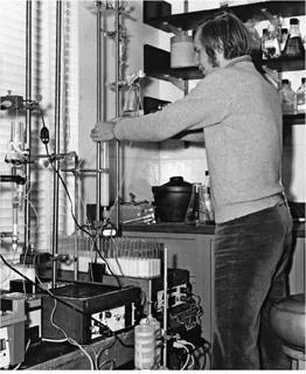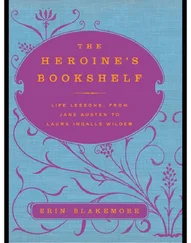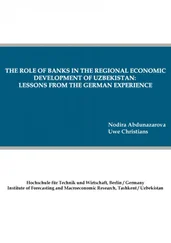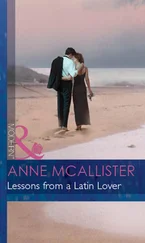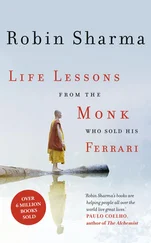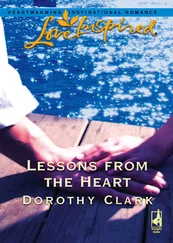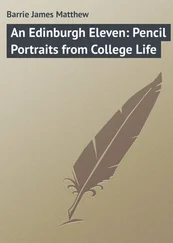James Watson - AVOID BORING PEOPLE - Lessons from a Life in Science
Здесь есть возможность читать онлайн «James Watson - AVOID BORING PEOPLE - Lessons from a Life in Science» весь текст электронной книги совершенно бесплатно (целиком полную версию без сокращений). В некоторых случаях можно слушать аудио, скачать через торрент в формате fb2 и присутствует краткое содержание. Жанр: Биографии и Мемуары. Описание произведения, (предисловие) а так же отзывы посетителей доступны на портале библиотеки ЛибКат.
- Название:AVOID BORING PEOPLE: Lessons from a Life in Science
- Автор:
- Жанр:
- Год:неизвестен
- ISBN:нет данных
- Рейтинг книги:5 / 5. Голосов: 1
-
Избранное:Добавить в избранное
- Отзывы:
-
Ваша оценка:
- 100
- 1
- 2
- 3
- 4
- 5
AVOID BORING PEOPLE: Lessons from a Life in Science: краткое содержание, описание и аннотация
Предлагаем к чтению аннотацию, описание, краткое содержание или предисловие (зависит от того, что написал сам автор книги «AVOID BORING PEOPLE: Lessons from a Life in Science»). Если вы не нашли необходимую информацию о книге — напишите в комментариях, мы постараемся отыскать её.
AVOID BORING PEOPLE: Lessons from a Life in Science — читать онлайн бесплатно полную книгу (весь текст) целиком
Ниже представлен текст книги, разбитый по страницам. Система сохранения места последней прочитанной страницы, позволяет с удобством читать онлайн бесплатно книгу «AVOID BORING PEOPLE: Lessons from a Life in Science», без необходимости каждый раз заново искать на чём Вы остановились. Поставьте закладку, и сможете в любой момент перейти на страницу, на которой закончили чтение.
Интервал:
Закладка:
This debacle, however, would not have occurred if Francis and I had started to think as if we were chemists. Even without the King's X-rays, there were sufficient clues in the chemical literature that should have led us to propose a double helix as the basic structure of DNA. From the start we should have restricted ourselves to models in which externally located sugar-phosphate backbones were held together by hydrogen bonds between centrally located bases. Strong physical chemical evidence for bases so held together had come from the postwar experiments of John Gulland. In 1946, his Nottingham lab showed that within native DNA molecules the bases are so arranged as to hinder them from exchanging hydrogen atoms. These data suggested widespread hydrogen bonding between DNA bases. This insight was widely available, published by Cambridge University Press in the 1947 Society for Experimental Biology symposium volume on nucleic acids.
Furthermore, given Linus Pauling and Max Delbrück's prewar proposal that the copying of genetic molecules would involve structures of complementary shape, Francis and I should have reasonably focused on two-chain rather than three-chain models. Thinking this way, each DNA base should hydrogen-bond exclusively to one with a molecule of complementary shape. In fact, experimental data pointing to this conclusion, too, already had been published, most coming from the lab of the Austrian-born chemist Erwin Chargaff in New York. Without understanding the significance, he reported that in DNA the amounts of the purine adenine were roughly equal to the amount of the pyrimidine thymine. Likewise, the amount of the second pur ine, guanine, was similar to the amount of the second pyrimidine, cytosine.The exact shape of such base pairs would depend upon where the atoms available for hydrogen bonding were located on each base. In 1951, few chemists knew enough quantum mechanics to make such inferences. So that fall we should have sought advice from the several British chemists trained in this esoteric field. In retrospect, Alex Todd's lab, after determining the covalent linkages in DNA, should have moved on to determining what the molecule looks like in three dimensions. But in those days, even the best organic chemists thought such problems were better left to X-ray crystallographers. In turn, most X-ray diffraction experts felt the time had not yet arrived to tackle biological macromolecules. In a sense, then, the field was wide open.
Even after he found the a-helix, Linus Pauling remained only moderately attentive to DNA, never seriously believing then that it had a genetic role. Even so, when hearing of Maurice Wilkins's crystalline photo, he asked to have a look, being misinformed that Maurice himself was not seriously trying to determine the structure. As that was precisely what Maurice was up to, he quickly replied that he wanted more time to look over the photo before releasing it to others. Undeterred, Linus wrote directly to the King's boss, John Randall, but this approach was likewise unsuccessful. Linus lost the scent until a year later at a summer phage meeting outside Paris, where he first learned of the work recently completed at Cold Spring Harbor by Alfred
Hershey and Martha Chase, showing phage genes were also made from DNA. The news convinced Linus he must go after the DNA structure despite his lack of high-quality DNA X-ray photos. His voyage back to the States could have been a fortuitous opportunity. Also on board the transatlantic boat was Erwin Chargaff, who like Pauling had come to Europe to attend that summer's International Biochemical Congress in Paris. But instead of learning about the equivalence of A with T and G with C, Linus took an instantaneous dislike to his shipmate and avoided him all across the Atlantic.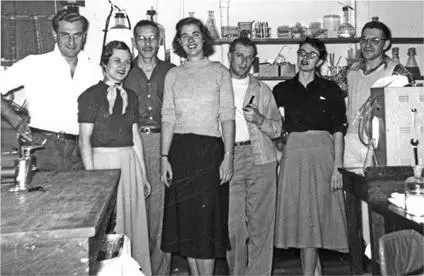
Alfred Hershey's group at Cold Spring Harbor, 1952: Niccolò Visconti, Martha Chase, AlHershey, Constance Chadwick, Neville Symonds, June Dixon, and Alan Garen
Preoccupied much of the fall of 1952 with the race against Francis Crick for the coiled coil structure of α-keratin, Pauling turned to DNA in earnest only in late November. Soon he was very much attracted to a DNA model in which three sugar-phosphate backbones coiled around each other. He was hung up on three chains because of the reported high density of DNA. At no time did he seriously consider a two-chain molecule. To hold the three chains together, he conceived of DNA as uncharged, forming hydrogen bonds between opposing
phosphate groups. Soon satisfied that he had found the general structure for nucleic acids, he wrote to Alex Todd a week before Christmas, adding he was not bothered that his structure provided no clues as to how DNA functions in cells. That problem was for another day. At no time did he ever take into account Chargaff's base compositions, published more than a year before in several journals. The essential parameters for Linus that December were bond angles and length, not what DNA did biologically or how it behaved in solution. It was immediately evident that the atoms of his model were not fitting together as neatly as they did in the a-helix. Even his best structure was stereo-chemically shaky, with several central phosphate oxygens uncomfortably close to each other.Fearing that someone in England might beat him to the punch with a similar model, Linus hastily submitted a manuscript for publication in the Proceedings of the National Academy. Then he triumphantly sent two manuscript copies to Cambridge—one to Bragg, the other to his son Peter. We were instantly engulfed in anxiety until we realized that Linus had used hydrogen atoms belonging to the phosphate groups to hydrogen-bond the three chains together. We knew at once his model must be wrong since DNA—an acid—normally releases all its hydrogen ions in solution, and so Francis and I rushed around Cambridge to see whether the local chemical hotshots also found Pauling's concept totally implausible. Quickly reassured by Alex Todd that Linus had indeed made a gigantic chemical goof, I went down almost immediately to London to show the manuscript to Maurice Wilkins and Rosalind Franklin, the latter preparing to move to J. D. Bernal's group in Birkbeck College, where she would no longer work on DNA.
Maurice was more than relieved to learn that Linus was so far off base. In contrast, Rosalind was annoyed at my showing her the manuscript, tartly telling me that she had no need to read about helices. In her mind, the crystalline DNA A-form structure was most certainly not helical. In fact, six months before, she had sent out invitations to a July “memorial service” to celebrate the death of the DNA helix. Here Maurice thought that Rosalind had been badly deluding herself, and to prove it he impulsively showed me an X-ray photo that the King's
group had been keeping secret since Raymond Gosling took it more than nine months before. Originating from a more hydrated B-form DNA fiber, this picture displayed unequivocally the large cross-shaped diffraction pattern to be expected from a helical molecule. My jaw dropped, and I rushed back to Cambridge to tell everyone what I had learned. In my mind we should not wait a moment longer before commencing to build models. Someone was bound to tell Linus that his three-chain model was dead on arrival. Sir Lawrence Bragg instantly agreed, and with him finally behind us Francis and I soon were back playing with cutout shapes. By then I realized that DNA's density did not, as I originally thought, rule out two strands as opposed to three. It thus made sense for me to focus first on possible ways for two DNA chains to twist around each other.In fact, Rosalind also should have been focusing on two-chain DNA models. More than a year before, she had carefully measured her X-ray diffraction patterns from crystalline A-form DNA, looking for possible molecular symmetries. Finding her data compatible with three possible chemical “space groups,” she went up to Oxford to get advice from Dorothy Hodgkin, then England's premier crystallographer, justly famed for solving the problem of the structure of penicillin. As soon as Dorothy saw that Rosalind was considering space groups involving mirror symmetry, however, she sensed crystallographic cal-lowness. Experienced crystallographers would never postulate mirror symmetry for a molecule made up exclusively of 2-deoxy-D-ribose. Instead, Dorothy believed, Rosalind should now have been considering only the implications of the third monoclinic space group (a rectangular prism of three unequal axes). Upset by Dorothy's sharp putdown of her crystallographic acumen, Rosalind left Oxford, never to return. If she had gone instead to Francis for help, she would have immediately learned that the C2 monoclinic space group suggested that DNA was a double helix with its chains running in opposite directions.
Читать дальшеИнтервал:
Закладка:
Похожие книги на «AVOID BORING PEOPLE: Lessons from a Life in Science»
Представляем Вашему вниманию похожие книги на «AVOID BORING PEOPLE: Lessons from a Life in Science» списком для выбора. Мы отобрали схожую по названию и смыслу литературу в надежде предоставить читателям больше вариантов отыскать новые, интересные, ещё непрочитанные произведения.
Обсуждение, отзывы о книге «AVOID BORING PEOPLE: Lessons from a Life in Science» и просто собственные мнения читателей. Оставьте ваши комментарии, напишите, что Вы думаете о произведении, его смысле или главных героях. Укажите что конкретно понравилось, а что нет, и почему Вы так считаете.
